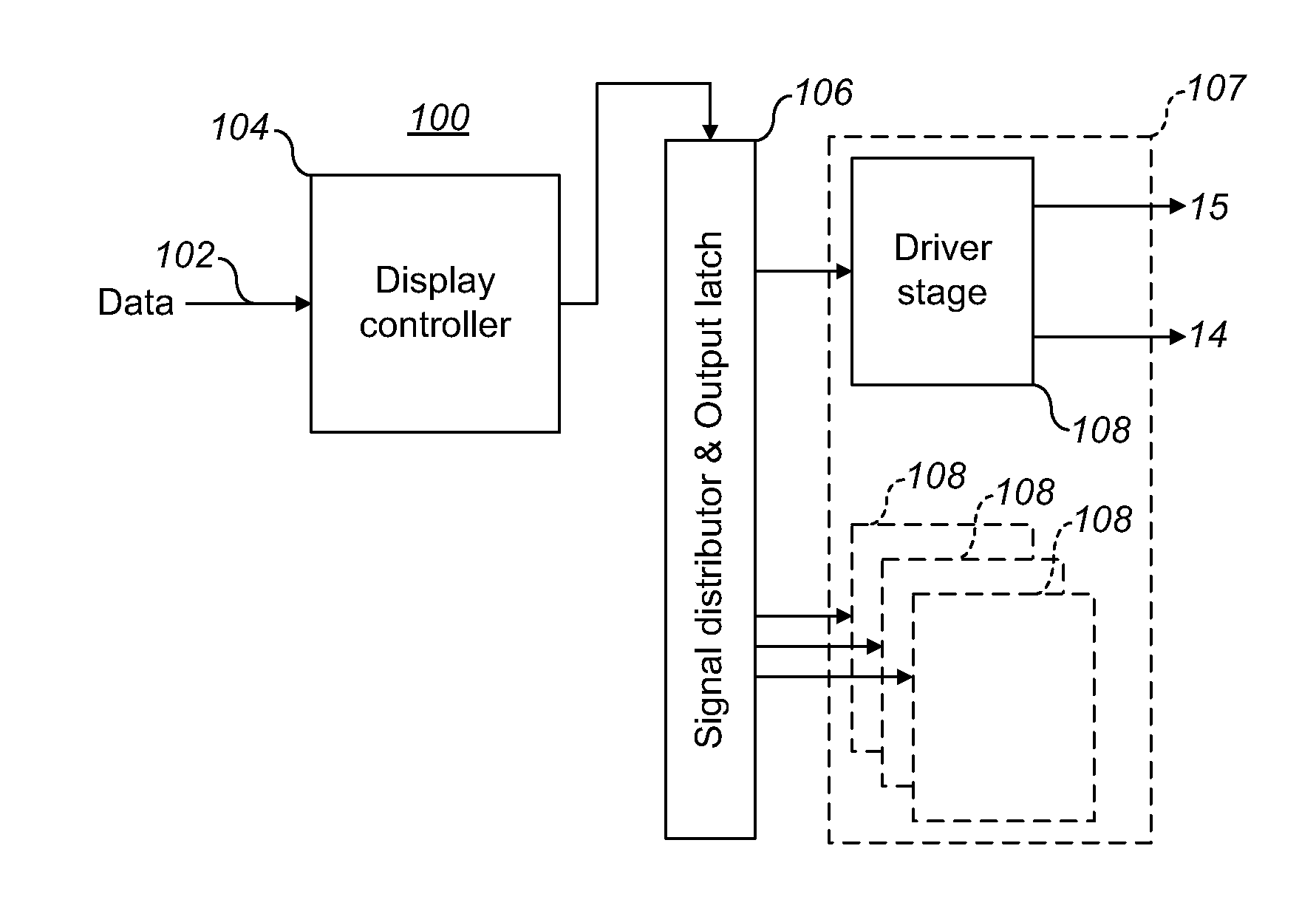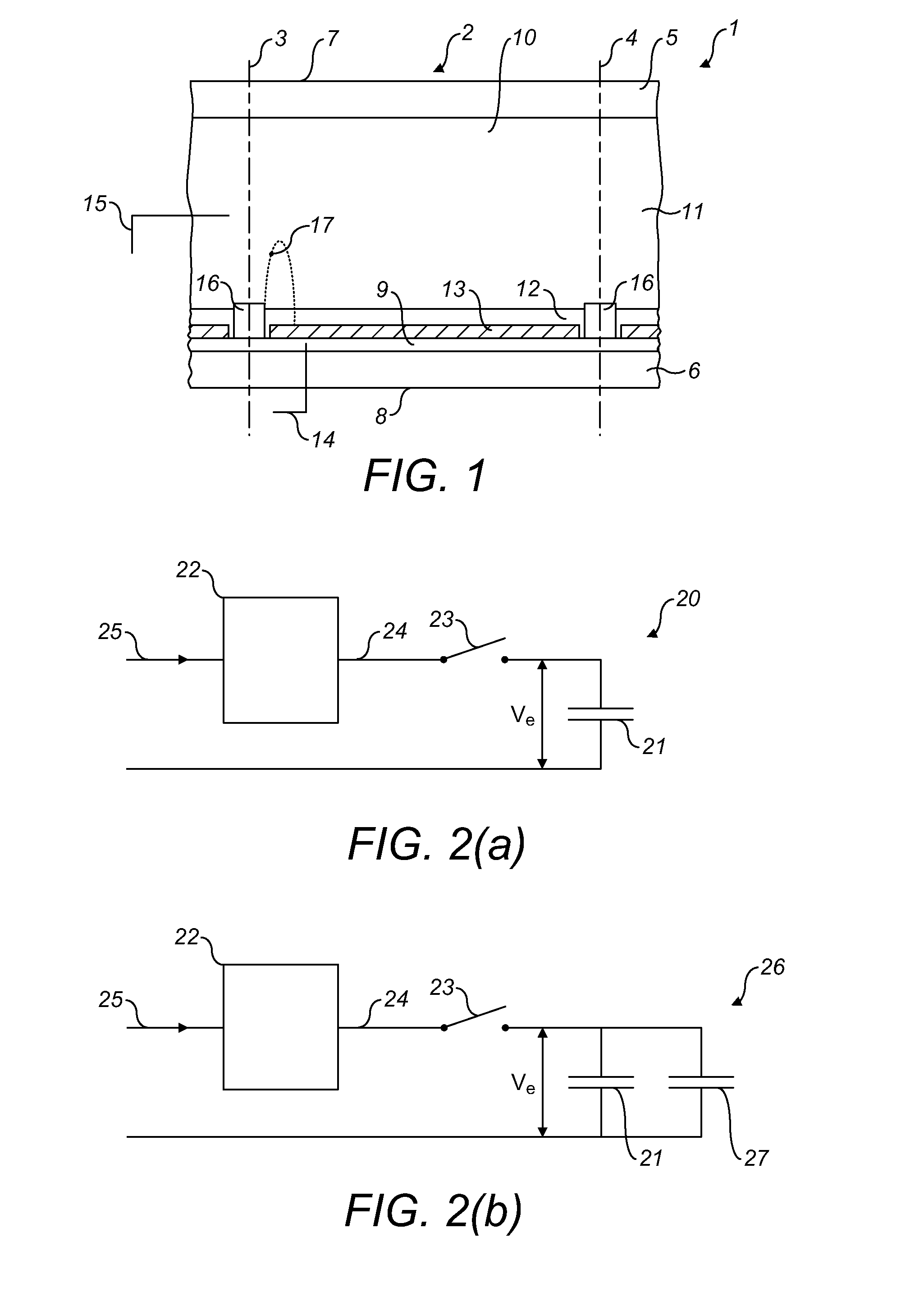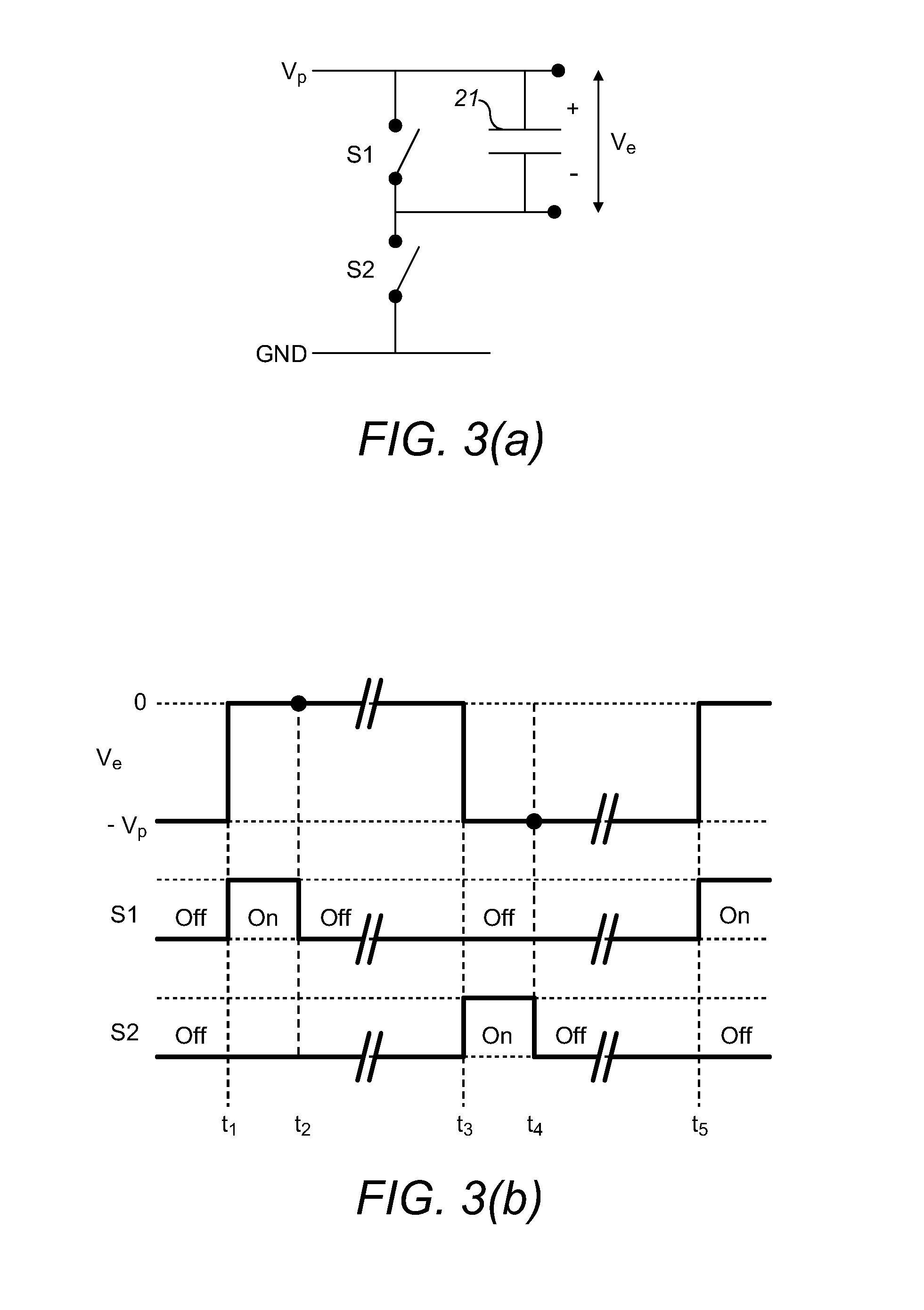Electrowetting system
a technology of electronic coding and e-mail, applied in the field of electronic coding systems, can solve the problems of large volume, large physical size of the memory store, and significant power consumption of the memory store of this speed, and achieve the effects of reducing power consumption and the required bandwidth of the display driver, efficient data transfer, and high quality
- Summary
- Abstract
- Description
- Claims
- Application Information
AI Technical Summary
Benefits of technology
Problems solved by technology
Method used
Image
Examples
Embodiment Construction
[0057]FIG. 1 shows a diagrammatic cross-section of an embodiment of an electrowetting display device 1. The display device includes a plurality of electrowetting elements 2, one of which is shown in the Figure. The lateral extent of the element is indicated in the Figure by the two dashed lines 3, 4. The electrowetting elements comprise a first support plate 5 and a second support plate 6. The support plates may be separate parts of each electrowetting element, but the support plates are preferably shared in common by the plurality of electrowetting elements. The support plates may be made for instance of glass or polymer and may be rigid or flexible.
[0058]The display device has a viewing side 7 on which an image or display formed by the display device can be viewed and a rear side 8. The first support plate 5 faces the viewing side; the second support plate 6 faces the rear side 8. In an alternative embodiment the display may be viewed from the rear side 8. The display device may b...
PUM
 Login to View More
Login to View More Abstract
Description
Claims
Application Information
 Login to View More
Login to View More - R&D
- Intellectual Property
- Life Sciences
- Materials
- Tech Scout
- Unparalleled Data Quality
- Higher Quality Content
- 60% Fewer Hallucinations
Browse by: Latest US Patents, China's latest patents, Technical Efficacy Thesaurus, Application Domain, Technology Topic, Popular Technical Reports.
© 2025 PatSnap. All rights reserved.Legal|Privacy policy|Modern Slavery Act Transparency Statement|Sitemap|About US| Contact US: help@patsnap.com



